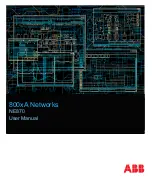
3Com Switch 8800 Configuration Guide
Chapter 33 QoS Configuration
33-1
Chapter 33 QoS Configuration
33.1 QoS Overview
Conventional packet network treats all packets equally. Each switch/router processes
all packets in First-in-First-out (FIFO) mode and then transfers them to the destination
in the best effort, but it provides no commitment and guarantee to such transmission
performance as delay and jitter.
With fast growth of computer networks, more and more data like voice and video that
are sensitive to bandwidth, delay and jitter are transmitted over the network. This
makes growing demands on quality of service (QoS) of networks.
Ethernet technology is a widely-used network technology dominant for independent
LANs and many LANs based on Ethernet are organic parts of the Internet. In addition,
Ethernet access is becoming one of the major access modes for Internet users.
Therefore it is inevitable to consider Ethernet QoS if we want to achieve point-to-point
global QoS solution. Ethernet switching devices then naturally need to provide different
QoS guarantee for different types of services, especially for those which are sensitive
to delay and jitter.
The following terms are involved in QoS.
I. Flow
It refers to all packets passing thought the switch.
II. Traffic classification
Traffic classification is the technology that identifies the packets with a specified
attribute according to a specific rule. Classification rule refers to a packet filtering rule
configured by an administrator. A classification rule can be very simple. For example,
the switch can identify the packets of different priority levels according to the ToS (type
of service) field in the packet headers. It can also be very complex. For example, it may
contain information of the link layer (layer 2), network layer (layer 3) and transport layer
(layer 4) and the switch classifies packets according to such information as MAC
address, IP protocol, source address, destination address and port ID. Classification
rule often is limited to the information encapsulated at the packet header, rarely using
packet contents.
III. Packet filtering
Packet filtering refers to filtering operation applied to traffic flow. For example, the deny
operation drops the traffic flow which matches the classification rule and allows other
traffic to pass. Ethernet switches use complex classification rules, so that traffic flow
can be filtered purposefully to enhance network security.
















































